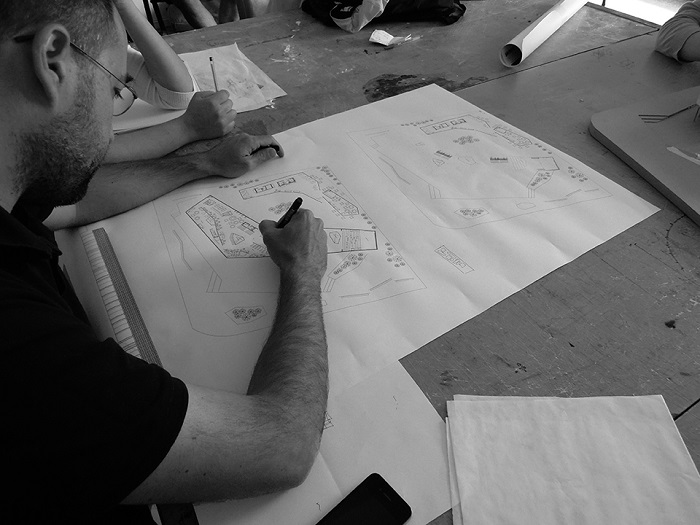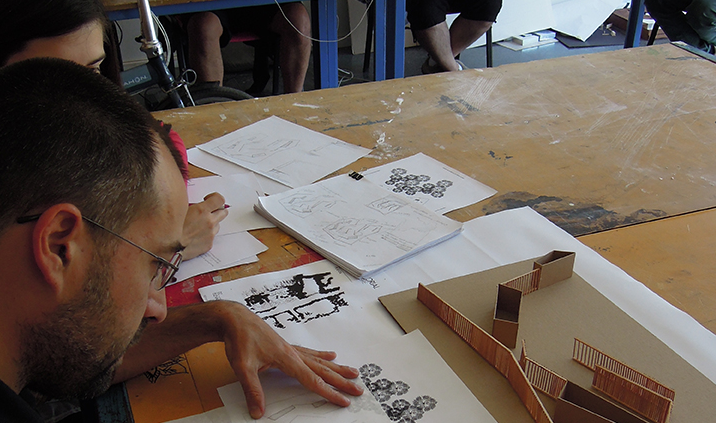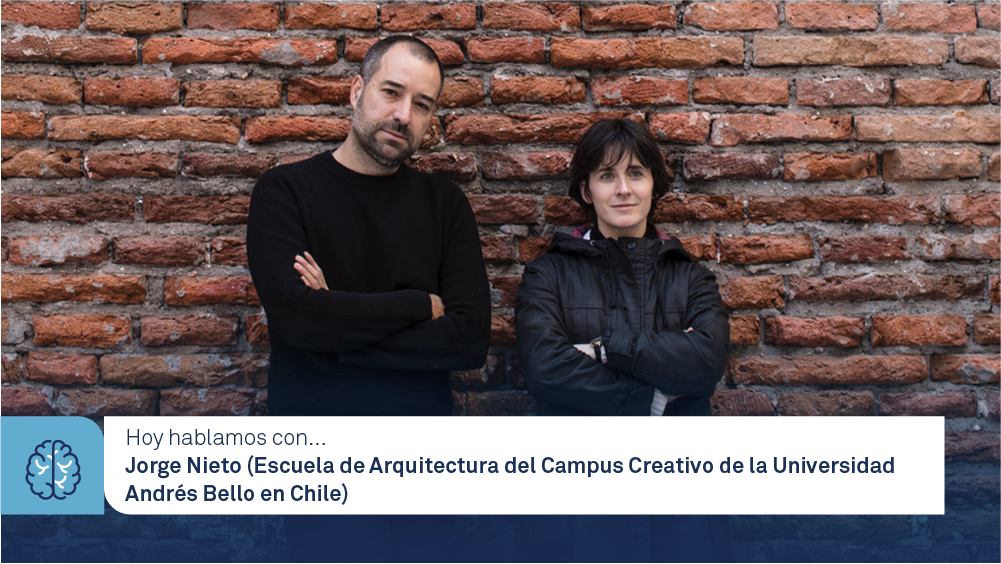Jorge Nieto, director of the Escuela de Arquitectura del Campus Creativo (School of Architecture of the Creative Campus) from Andrés Bello University in Chile.
Jorge Nieto is a Spanish architect who has been working in Chile for the past ten years, dedicating himself to teaching and executing projects from his office. However, the pandemic allowed him to return to his homeland and direct the office and school from afar.
From a more academic standpoint, although company-wise too, as he has his architecture firm, Jorge Nieto tackles the sustainable city concept from a point of view that gives vital importance to relationships with others and the environment.
Nieto considers that besides using one material or the other, we need to be more sustainable to avoid unnecessary travel and prevent cities from spreading out “like wildfire”. Centralizing services makes people live in highly populated centers to survive. In smaller towns, the need to constantly move is significantly reduced in the same way as with telecommuting.

This work trend we have been “forced” into by the pandemic has brought us closer to what everyone wants: to live more comfortably and efficiently, wherever we want, not where we have to.
This ground-breaking view has allowed Nieto to work on new concepts of the city, from an architect’s mind with a vision that goes beyond mere design. “Telecommuting is what is changing the cities. People can live now wherever they want to live. A high percentage of the population don’t live where they want to, but where they can, due to work, school, or budget constraints. We haven’t realized until the pandemic that the more sustainable option is to settle in environments more connected to nature and diverse urban centers”, explains the architect.
“In Latin American countries, despite lockdowns, people were obligated to travel, since essential services are always in rich areas. In Chile, for instance, part of the population had to cross the city to go to a pharmacy”. That doesn’t happen in smaller cities, explains Nieto.
We need to promote better use of the territory and more but smaller living centers that allow you to decide where to live. “To breathe better quality air and be more in tune with the environment. Technologies must be applied to allow this”.

His vision requires shifting more importance to already existing smaller urban centers. Legislation should know how to adapt to these new needs of the population and not be restrictive or late to this new way of understanding urban nets. Same as with housing, where co-housing or co-living are having a tough time fitting into legislation, urban planning is a bit late to understand this shift in trend.
The urban center has improved greatly regarding including pedestrians, bicycles, green areas, waste recycling… it’s not as much about being against using cars but finding balance. “I like Jan Gehl’s posture, who says that a city is well designed when you can see parents taking a walk with their kids because that means there is a standard of safety and wellness. Richard Rogers used to say that “the friendliest city is the one where you run into eight friends on your way to work”, says the architect.
As for building trends, according to Nieto, whenever a private person calls for a project, two things always come through: the requirements (space, places, quality, sustainability) and how much it costs.
Net Zeto building in Latin America
“For example, we have just finished a project that is going to be the first Net Zero building in Latin America – not only does it not consume, but it generates for the rest of the complex. This entails a higher cost, but also saves in the long run. It is beneficial for the planet but at the moment of paying it’s more expensive.”
Furthermore, as the director of the Escuela de Arquitectura de Campus Creativo of Andrés Bello University, he has led a riveting challenge.
“At universities, we teach a discipline, with millions and millions of students always coming in or out. The tragedy is that it is extremely difficult to graduate and find a job. Success is to be able to adapt your education to become a versatile professional in an ever-changing world. Our notion for this campus is that an architect may end up doing films, art, research, etc… and build according to their interests. The student personalizes their development throughout their studies with a more alternative profile”, explains Nieto. An innovative campus of the Chilean university in which students and professors from all over the world learn the value of mixing up different occupations.
